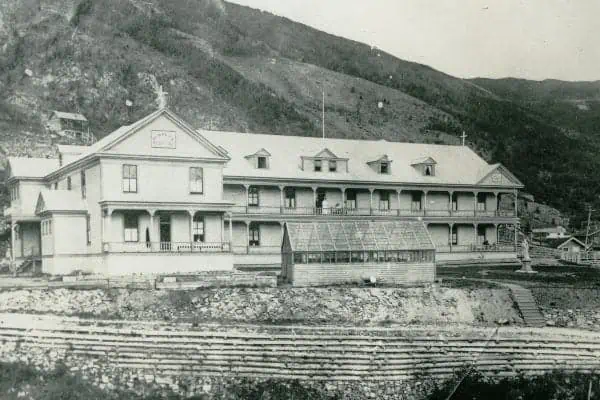If you want to get a really good look at Dredge #4 on the Bonanza Road, this summer is the time to do it.
This will be your last opportunity to get a full tour of the structure, climb all seven floors, walk from one end to the other of a building that is two-thirds the length of football field, and get a sense of just how massive this dredge really was.(Just one of 12 such machines that operated in the Klondike until 1966.)
Next summer, thanks to cuts in Parks Canada staffing here, you’ll have to stand in the parking lot and read all about it from the outside. This year there are still guided tours, and there really is no substitute.
Dredge #4, built in 1912 for the Canadian Klondike Mining Company, was the largest wooden-hulled bucket-lined dredge in North America, working the creeks until 1959, when it was shut down and left frozen in its own tailings pond.
Speaking of the Dredge during a recent session of the Yukon Legislature, Klondike MLA Sandy Silver said, “Parks Canada acquired it in the summer of 1970, but it was another 21 years of seasonal flooding before the dredge was excavated, re-floated and relocated to its current position on higher ground.
“Parks Canada has made significant investments in the multi-year restoration project. The dredge was designated a national historic site in 1997.
“It’s a tangible link to our recent history and a constant reminder of the industry’s will and engineer’s ingenuity.”
Dredge #4 was re-floated and relocated in the 1990s before the shifting permafrost could snap it in two. Subsequently, the newly exposed frozen wood began to deteriorate and large sums of money have been spent in stabilizing the hull and replacing rotting timbers.
That work, part of a multi-year plan to both preserve the Dredge and make it safe for visitors, continues this summer, though the three quarters of a million dollars in this year’s budget is the last money guaranteed for this project.
When the Dredge was commemorated by the Historic Sites and Monuments Board of Canada, the citation read: “Dredge No. 4 is commemorated because it represents the importance of dredging operations in the Yukon between 1899 and 1966.
“Dredges were brought to the Yukon in 1899 as a very efficient means of mining for Klondike gold. Corporate mining played a major role in the viability of the community of Dawson City and the Yukon Territory.”
Most recently, on June 8, the Dredge was dedicated by the Canadian Society for Civil Engineering at that organization’s annual general meeting in Edmonton. A plaque marking the Dredge as a Regional Historic Site was unveiled at that meeting.
Given the general esteem in which the Dredge is held, it does seem rather a shame that this is the last year people will actually be able to tour it.




